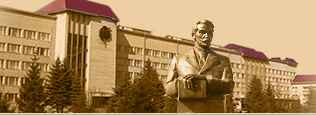FEATURES RHYTHM INFORMATION SPACE IN FOREST GEOSYSTEMS ARRAY SUBURBAN LVIV (FOR EXAMPLE FOREST AREA OF LAPAYIVKA).
The proposed idea for formation in forest geosystems of the information space on the basis of experimental research in the field suburban area of Lviv Lapayivka. Graphs that reflect general patterns of information changes in forest geosystems and their correlation with the features of physico-geographical conditions. Substantiated conclusions that brushing a clear model of the emergence of biometric information rhythmic parameters in forest area, their strategic importance, listed on this site. Forest geosystems suburban area of Lviv Lapayivka are composed of a huge amount of information that can be converted from one form to another. Information space formed in the green zone, mainly represented functional features and has a number of strategic objectives. Forest area who have biometric indicators which is the founder and carrier information form rhythmic patterns of information space. Describing the benefits of certain aspects of information forms of forest geosystems, summarizing conducted systematic research can offer a single classification of information entities that form an information space in suburban tracts of Lviv. Media space a concept conceptual multidimensional space formed due to spatial coordinates, taking into account the parameter time and features information interactions in forest geosystems. Universality information space suburban forest zone of Lviv is closely interrelated objects represented in it. In particular, forest geosystems included several information structures simultaneously, leading to the integration of the space recursive information space (space information in the information space).
Key words: information space, information rhythms, forest geosystems, landscape tracts, suburban forest area of Lviv Lapayivka.
References:
- Abdeev R. F. Filosofiya informacionnoy civilizacii / F. Abdeev. – M.: VLADOS, 1994. – 336 s.
- Vasilevich V. I. Ocherki teorii fitocenologii / I. Vasilevich. – L.: Nauka, 1983. – 248 s.
- Kuznecov N. A. Informacionnoe vzaemodeystvie kak obekt nauchnogo issledovaniya / A. Kuznecov, N. L. Mushehishvili, Yu. A. Shreyder // Voprosy filosofii, 1999, № 5.
- Petlin V. M. Sy’nergety’chni zalezhnosti v organizacii pry’rodny’h tery’torial’ny’h sy’stem / M. Petlin. – L’viv: Vy’davny’chy’y’ centr LNU im. Ivana Franka, 2013. – 396 s.
- Setrov M. I. Informacionnye processy v biologicheskih sistemah / I. Setrov. – L., Nauka, Leningr. otd., 1975. – 155 s.
- Chernavskiy D. S. Sinergetika i informaciya (dinamicheskaya teoriya informacii) / Poslesl. G. Malineckogo. Izd. 2-e, ispr. i dop. // D. S. Chernavskiy. – M.: Editorial URSS, 2004. – 288 s.
- Yankovskiy S. Ya. Koncepcii obschey teorii informacii / Ya. Yankovskiy. – M.: Nauka, 1997. – 263 s.
FULL TEXT:
